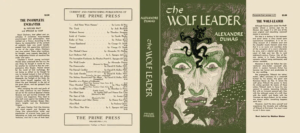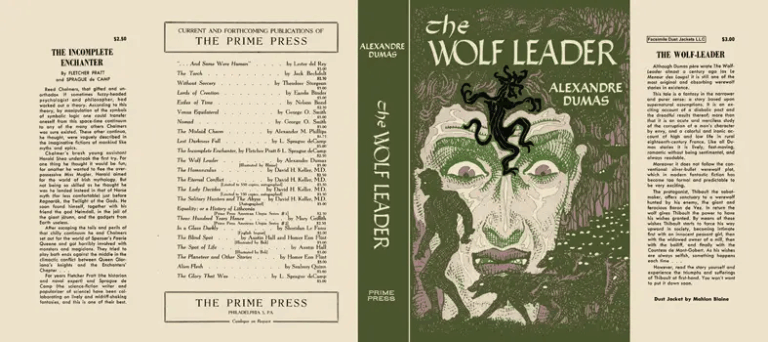For the first time in my life, last week I did something weird: I went to see a movie in Japanese. And no, before you get ideas, I do not understand Japanese: it had subtitles.
Anyway, the movie was Miyazaki’s last effort, The Boy and the Heron, and I had been hearing a lot of people saying they were confused, they thought the movie was weird (even for Miyazaki’s standards) and, overall, they didn’t get it.
Now, let’s make two assumptions:
1) I think The Boy and the Heron is one of those movies that are so rich and layered you can see many things in it, and it doesn’t mean they’re really there nor that Miyazaki intended for them to be there;
2) What follows is what I saw in the movie, and you can say I’m hallucinating.
I also think we should get rid of this obsession with having everything explained down to the detail, and number one is a damn fine way of making art, but that’s an entirely different conversation.
So, what’s the movie about and why am I glad for people who didn’t get it?
The Boy and the Heron is a grand, complex, multifaced allegory of grief.
The Story in its Basics
In its basics, the story is simple: during the backdrop of a modern war, a boy called Mahito transfers from Tokyo to the countryside where his father has recently married his aunt (his mother’s sister) after the mother’s tragic death in a fire.
As soon as he arrives, Mahito is greeted by his kind and pregnant aunt, who does her best for him to settle comfortably, and immediately starts being haunted by a heron, a normal heron at first, who starts tempting him with a simple idea: his mother isn’t dead, and he can take him to see her. Refreshingly enough, Mahito immediately pushes back at the idea: grief is complicated as it is, without a swamp bird trying to mess with your head.
The bird gets increasingly grotesque as the story progresses: the more it tries to push Mahito towards denial, the more it takes on ridiculous features. And if you’ve ever been in denial about the death of someone, this will be the first thing to resonate heavily with you.
Meanwhile, Mahito has troubles at school and wounds himself to pretend he’s been bullied more than he actually is, eventually achieving that his father will keep him home. The school sucks anyways, he says, and teachers are all voluntary because of the war.
At home, heron aside, things are weird enough. The kind and pregnant aunt, Natsuko, is attended to by a retinue of weird elderly ladies who tell Mahito the story of the ancient, worn-down tower that stands in the garden: it’s an old artefact, which fell from the sky and was discovered by one of Mahito’s ancestors, and the ancestor himself disappeared into the tower after living much of his life obsessed with it.
It’s only shortly afterwards that Natsuko, Mahito’s aunt, disappears. The heron claims she’s been taken to the tower, and Mahito goes to the rescue with one of the elderly ladies called Kiriko.
As the three enter the tower, Mahito dispels an illusion of his mother and shoots at the heron, revealing the weird man living inside the shell: a mysterious figure appears and orders the heron to be Mahito’s guide in the fantastic world they’re about to enter.
The fantastic world inside the tower
Mahito and the heron, having lost sight of old Kiriko, start exploring the world inside the tower and the boy quickly understands it’s a world outside of time: they meet a younger version of Kiriko, who’s been living and fighting the strange spirits who live in this land and catches fishes for them. The spirits cannot kill, in fact, and they can only be reborn in the world of above after they’ve been eating the fish Kiriko catches for them. Pelicans are fighting this rebirth process, trying to eat the spirits, and this is how we meet another strange figure who haunts this land: it’s Himi, a pyrokinetic woman who protects the spirits as they try to ascend and be born again. She’s Mahito’s mother.
The strange land also hosts another kind of living creature: parakeets who became enormous, flesh-eating, and are ruled by a cruel king. They’re trying to break free from the wizard who rules over the land and, as it becomes increasingly clear that the wizard is Mahito’s ancestor, they capture Lady Himi to offer her to the wizard in exchange for autonomy and agency over the world.
After refusing a chance to go back to their world, Mahito and Kiriko eventually find Natsuko, who’s about to give birth and can’t be allowed to do so into this strange land, free Lady Himi, and Mahito refuses the offer to become ruler of this land, destroying everything and returning everyone to their original time including Lady Himi, who will become Mahito’s mother and eventually die in a fire.
I’m sure I skipped many parts that will be significant to somebody, but this is the story in a nutshell.
A coming-of-age tale?
Maybe. The BBC defined it “a coming-of-age tale in which a child must overcome his selfishness and learn to live for others” in their article How Do You Live: Hayao Miyazaki releases mystery final film, and who am I to contradict the BBC? I beg to differ, however, as Mahito’s struggles don’t exclusively pertain to his age, but I found them to be more relatable and universal.
The story borrows his title from Genzaburō Yoshino’s 1937 novel known in English as How Do You Live?, and I think his grandson Taichiro came much closer to the mark when he highlighted a shared theme of coming to terms with strife and loss.
Let’s see how and why.
Denial and Isolation
As I’ve already suggested in my summary, ten minutes into the movie, you’re immediately faced with a powerful picture of denial and how grotesque it can be.
Mahito’s decisively pushes back against the heron’s initial temptation, though having never seen the mother’s body, and it’s immediately clear that the heron needs to find another way if it wants to draw Mahito into the world of the tower.
If we accept that the world of the tower is a world of grief, the abduction of the aunt couldn’t shout a clearer message: while the father is endlessly working to produce (aeroplanes for the war) and strives to push on, perhaps in his own way of not coping with grief, the brave and kind aunt risks being swallowed in the world of grief herself, overlooked by everyone as it’s fit for a fairytale stepmother, and this is no way to start a new family. Though Mahito never seems hostile to the idea of his father marrying his aunt, he distances himself from her multiple times, stating he’s trying to save her not because he loves her but because his father likes her. It’s significant (spoiler alert) that they’re all freed from the world of the tower only when Mahito calls Natsuko “mother“.
Though denial doesn’t appear tempting to Mahito, isolation is: his shunning away from school isn’t just a narrative device for him to be home and roam around.
The consequences of isolating yourself in grief couldn’t be clearer when we meet the ancestor in his tower: he’s struggling beyond reason to keep his world together, regardless of the nonsensical horrors the world created.
Mourning as a Construct
If grief is a very real sentiment, grief is presented as a construct and, more specifically, the construct of the tower.
Originally built to preserve something that fell from the sky, whatever that is, it became an obsession, and the uncle is now striving to keep it together by clumsily balancing geometrical shapes that are unfit for the purpose. If we accept that the grief process is a social construct, Miyazaki tells us that this construct is often obsolete and wobbly, created by some old man who doesn’t want to carry on with his life and would like everyone to stay trapped in a similar stasis.
Mahito refuses to be told how to deal with things, in what I think is the most powerful message of the movie. If his journey towards healing means fighting evil parakeets, no one can be allowed to take that away from him.
A circular track of time and other recurring themes
It is true that some of the themes in the movie also appeared in previous works. Some said the usage of time is similar to Howl’s Moving Castle, though I urge you to remember that’s from a British novel, and surely one of the recurring themes is the optimistic approach to how children can create a better world by refusing to accept what more powerful figures would like to impose over them.
Burning the Grief Away
Nothing can be born in the land of grief: the spirits, who cannot kill, need nourishment to be reborn, and yet they fall prey to alien creatures, the pelicans. You can trust Miyazaki to know that the pelican is an old Catholic symbol for rebirth, connected with self-sacrifice as the first Christians thought the mother of these birds was feeding her chicks pieces of her own flesh (in fact, the animal regurgitates as many birds do). Well, in this movie, the pelicans are assholes. And they’re desperate. They prey on rebirthing spirits because they were brought into this land from another, and they have no food here.
If you want to see something in this, I will not stop you.
Miyazaki’s choice of the boy’s guides and allies is significant. It would have been easy to create characters out of nowhere, but what do we have here: the heron, a.k.a. denial unmasked; the younger, androgynous version of an elderly lady; the dead mother.
Refusing to be stuck in a world of static grief doesn’t come out of disrespect for those who came before you: on the contrary, they are your most powerful allies.
So how do you live? By coming to terms with the past; by forgetting it, or transforming it into something manageable and malleable, something that will not crush you.
— The Guardian
















No Comments